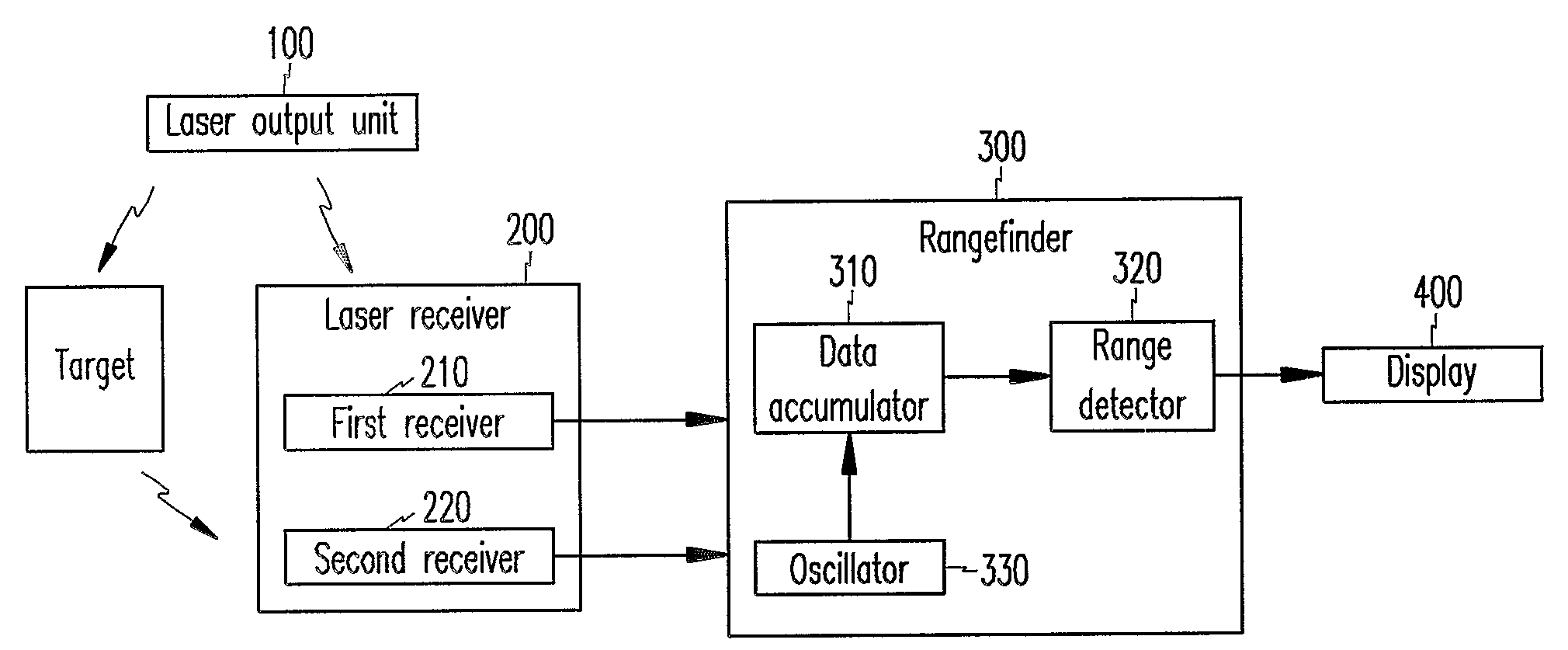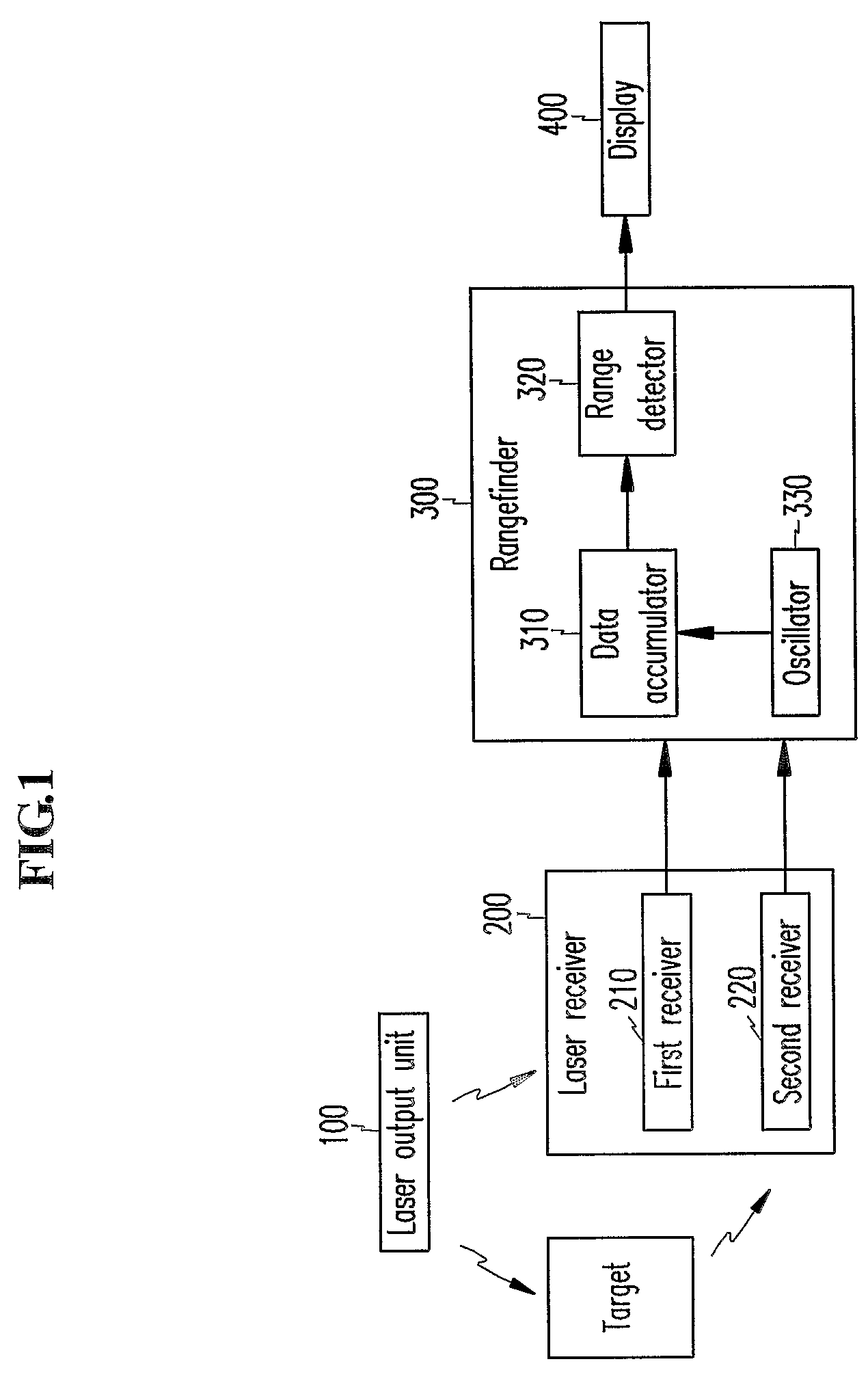Laser rangefinder and method thereof
a laser rangefinder and laser technology, applied in the field of laser rangefinders, can solve the problems of not easy to detect the target signal, different from the electro-optical system, etc., and achieve the effect of accurate detection of the target signal and improved range-finding performance of the rangefinder
- Summary
- Abstract
- Description
- Claims
- Application Information
AI Technical Summary
Benefits of technology
Problems solved by technology
Method used
Image
Examples
Embodiment Construction
[0030]In the following detailed description, only the preferred embodiment of the invention has been shown and described, simply by way of illustration of the best mode contemplated by the inventor(s) of carrying out the invention. As will be realized, the invention is capable of modification in various obvious respects, all without departing from the invention. Accordingly, the drawings and description are to be regarded as illustrative in nature, and not restrictive.
[0031]FIG. 1 shows a block diagram of a laser rangefinder according to a preferred embodiment of the present invention.
[0032]As shown, the laser rangefinder comprises a laser output unit 100 for outputting laser beams to a target, a laser receiver 200 receiving the laser beams reflected from the target and outputting corresponding electrical signals, a rangefinder 300 for finding a range up to the target based on the received signals, and a display 400 for displaying the found range.
[0033]The laser output unit 100 comp...
PUM
 Login to View More
Login to View More Abstract
Description
Claims
Application Information
 Login to View More
Login to View More - R&D
- Intellectual Property
- Life Sciences
- Materials
- Tech Scout
- Unparalleled Data Quality
- Higher Quality Content
- 60% Fewer Hallucinations
Browse by: Latest US Patents, China's latest patents, Technical Efficacy Thesaurus, Application Domain, Technology Topic, Popular Technical Reports.
© 2025 PatSnap. All rights reserved.Legal|Privacy policy|Modern Slavery Act Transparency Statement|Sitemap|About US| Contact US: help@patsnap.com



